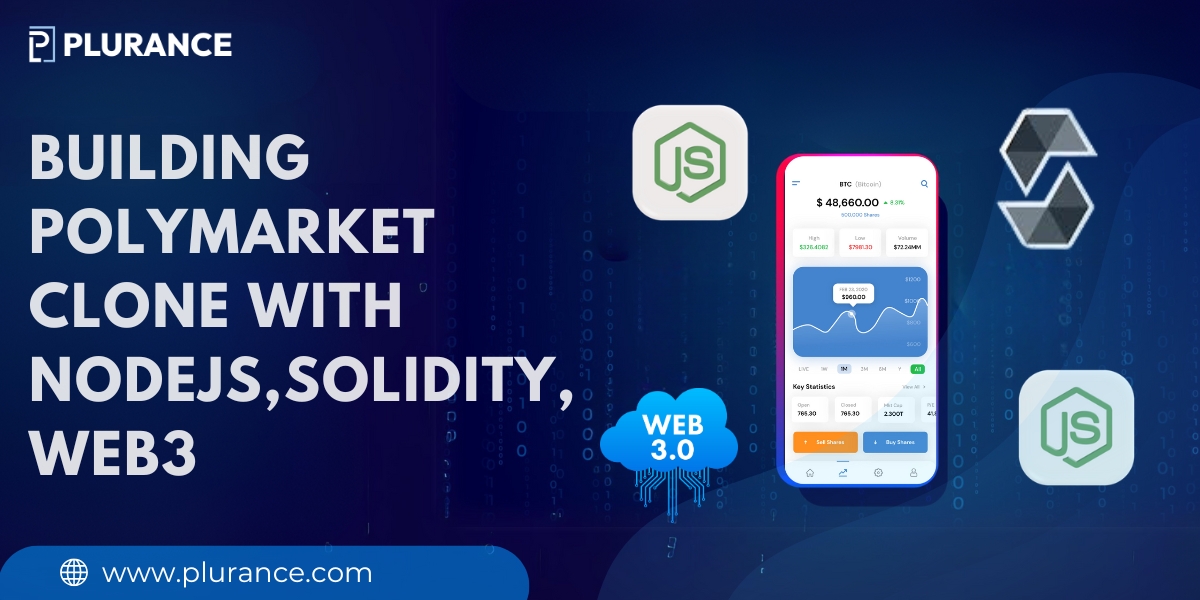Explore the technology stack used in Polymarket clone scripts and discover the frameworks,tools essential for building a powerful and reliable prediction market platform
Would you like Creating a Polymarket-like decentralized prediction market platform ?
You should require a strong backend that will be able to work with real time data and integrate seamlessly with a blockchain for secure transactions. Polymarket is successful in permitting users to bet on real events like elections, economic trends, with a trustless, intermediary free system. This guide will entirely focus on building a robust back-end for a platform to deal in real-world event outcomes such as Polymarket.
Polymarket Clone Script
A Polymarket Clone Script replicates offers a pre-built solution to launch a decentralized prediction market platform, powered by robust backend technologies. Built with Node.js for real-time server-side logic, Solidity for smart contracts on blockchain networks like Polygon, and Web3.js for seamless blockchain integration, it enables trading on event outcomes.This Polymarket clone script delivers a scalable, secure backend for creating markets, managing trades, and settling results efficiently.
Benefits of using backends like node.js, solidity, web3,js for Polymarket clone script
With a series of powerful technology combinations which can help build a prediction market platform with scalability, decentralization, and real-time functionality. Outlined below are the key advantages.
Node.js Scalable
Node.js asynchronous and event-driven architecture has proven very useful in the organization of a lot of concurrent users and real-time updates. It is crucial in prediction markets during peak events like those of elections or sports events.
De-centralization using Solidity
Smart contracts can be written in Solidity, which are deployable on blockchains like Ethereum or Polygon. They will build up into a trustless, intermediary-free system. Then these decentralized setups will guarantee clear markets' rules, the security of betting, and automated payouts, thus potentially raising trust among users.
Integration with Real-Time Blockchain Using Web3.js
Web3.js forms a connection between the blockchain and the Node.js backend to allow real-time interaction with smart contracts. This means that trade, state of market, and resolution updates happen in real-time, which is essential in keeping users entertained.
Security and Transparency Augmented
This trinity guarantees a transparent and secure platform. Node.js supports HTTPS and rate limiting; Solidity contracts become immutable once deployed, and Web3.js enables secure blockchain communication.
Build a decentralized prediction market platform like Polymarket with backend frameworks
Creating a Polymarket clone backend using Node.js, Solidity, and Web3 would be an exciting foray into decentralized prediction markets. The breakdown is as follows:
- Node.js is the runtime environment that executes server-side logic, which includes handling API endpoints and blockchain interaction.
- Smart contracts are written in Solidity and deployed on a blockchain such as Ethereum and Polygon for the trustless management of market creation, trading, and settlement. These contracts define the rules for predicting, payouts, and dispute resolution.
- Web3.js provides a bridge where Node.js sends transactions to the blockchain and retrieves contract data in real time.
The design involves establishing a Node.js server, introducing Web3.js for blockchain connectivity, and deploying Solidity contracts to manage the market logic. Notable considerations entail scalability, securing user transactions and finally oracles as a way of integrating data from the real world.
This backend setup turns a decentralized app (dApp) into providing real transparent, no-intermediaries associated with prediction markets much like using Polymarket to aggregate collective intelligence to make predictions on events.
Conclusion
Thus, the combination of backend like Node.js, Solidity, and Web3.js employs real-time server logic, decentralized smart contracts, and blockchain connectivity for creating a Polymarket-like prediction market platform. Node.js creates a responsive API, Solidity user-enforced trustless market rules, and finally, Web3.js connects everything. With oracle services, caching, and cloud hosting, here comes a scalable prediction market ready to compete with Polymarket. This stack is an entryway into the future of decentralized forecasting for crypto buffs or just curious developers.
If you looking for launching Prediction market platform then Plurance is the right choice with advanced technology stacks




















 IND
IND














